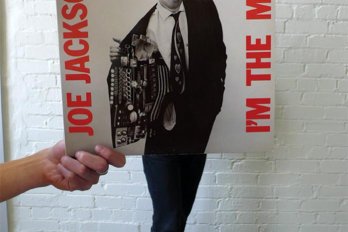Shanghai—Liu Zhidong steps on the gas, and his Changjiang 750 motorcycle ascends the ramp onto the elevated highway. With the sidecar, where I sit squinting against the dusty air, it takes up almost an entire lane. We head west, away from the stucco villas of the French Concession and toward the eccentric structures of modern Shanghai: skyscrapers topped with Roman pavilions, faux pagodas, and flying saucers. Liu relaxes his grip and settles into a steady pace as black Audis zip by on our left, their windows sealing out the cold.
Liu, a forty-eight-year-old retired executive, is wearing a brown leather People’s Liberation Army (pla) bomber jacket and matching pants that bunch up on his small frame. He served a few decades ago, but this isn’t the sort of thing they give to just anyone; he got the suit vintage. He’s vague about the years between his military service and his first Changjiang. What matters right now is the bike: its sturdy black frame, its signature 750cc engine, and its colourful history.
bmw unveiled the R71 sidecar bike in 1938, just as Germany was preparing its European blitzkrieg. The Soviet Union either licensed or stole the blueprints — it’s unclear whether they changed hands before or after the German-Soviet alliance fell apart — and by 1942 it was producing the nearly identical Ural M72. In the mid-1950s, the Soviets traded the plans to the Chinese, who again rechristened the bike the Changjiang 750, and the Nanchang Aircraft Manufacturing Company began churning them out for the pla. Over the next four decades, factory engineers tinkered with the engine, but on the surface the bike remained a near-replica of the original R71, a testament to the Chinese talent for faithful imitation.
In the 1990s, the pla began phasing out the Changjiang, and expatriates in Beijing and Shanghai — “any Western male within shooting distance of a midlife crisis,” one convert wrote in the New York Times — happily acquired them. By the next decade, Chinese men, whose mushrooming bank accounts and increasing free time made them susceptible, had caught up. The Changjiang’s rugged individualism appealed to a culture that had begun to prize Mongolian folk song ring tones, hiking boots on workdays, and, after decades of force-fed socialism, an originality captured in the borrowed term “diy” — do it yourself rather than follow the masses. The Nanchang factory still accepted small custom orders, so aspiring rebels could order their bikes new.
We exit the highway and find ourselves in a gated community of low-rise apartment buildings. Liu steers us into an underground parking lot, yanks off his helmet, and yells into his cellphone in Shanghainese: “We’re here!” He bought his first Changjiang in 2003 and quickly amassed a crew of rider friends: a dentist, an art teacher, a police officer, a contractor, an advertising executive. A few months later, they organized a riding club they called the Black Bats, partly for the bikes’ colour and partly for the club’s nocturnal excursions.
After a few minutes, a six-foot-tall man in cowboy boots and tight jeans swaggers toward us. Like Liu, Zhu Zhonglin sports a bomber, but his is black and adorned with various patches, and it stretches snugly across his broad chest. His hair is gelled into thin curls. “You can call me Frank,” he tells me.
An original Bat, Frank owns and operates a six-storey restaurant/massage complex outfitted in antique furniture amassed during his world travels. His five Changjiangs range from a classic black bike with a thin white stripe to one whose sidecar blazes with golden flames. The showpiece, now occupying a corner of the garage, is done in German grey with Nazi insignia on the sidecar. “It’s authentic that way,” Liu says with a nervous laugh.
Over lattes, Liu and Frank expound on their obsession. “The sidecar is a way of life for us,” Liu begins. By studying foreign motorcycle sites and imported copies of Iron Horse and Motorcyclist magazines, he has determined that the Changjiang is “our Harley . . . Germany makes bikes, Italy makes bikes, but only the Harley has a history.” The two makes also share a certain intangible flavour. “When you ride,” Liu says, “you’re close to the noise.” He emits a sound somewhere between a gurgle and a rolled r. Frank smiles knowingly.
Though their sidecars are more often used for gear than for passengers, the Bats are about human connections, Frank says. Last year, they delivered books to impoverished children in Anhui Province. At November’s Shanghai marathon, they rescued runners with leg cramps, shuttling them to medical stations in their sidecars. The month before, they toured Xinjiang for ten days, befriending Muslim noodle chefs and riding shirtless across the Taklamakan Desert.
And then there are the regular dinners at a small restaurant near People’s Square, where the Bats make merry over pickled radish, steamed fish, and cases of warm Tsingtao beer. Club excursions allow the aging nostalgists, alienated by the fast pace of post-socialist life, to summon up a measure of the country’s comradely past. Changjiangs represent an era when soldiers rode around in friendly pairs; when, as Frank remembers, “everyone left their doors open. You could play in the street with your friends every day. It was the Cultural Revolution, so no one had to go to school.” He gestures to the cold brick buildings outside. “Now everyone closes their doors. Is anyone even happy?”
I leave Frank and Liu lingering in the doorway: a large man and a small man in twin jackets, locked in the protracted goodbye of old friends. In time, Liu will climb on his bike and make his way back along the elevated highway, now pink and green with neon, to his family, and middle age.



